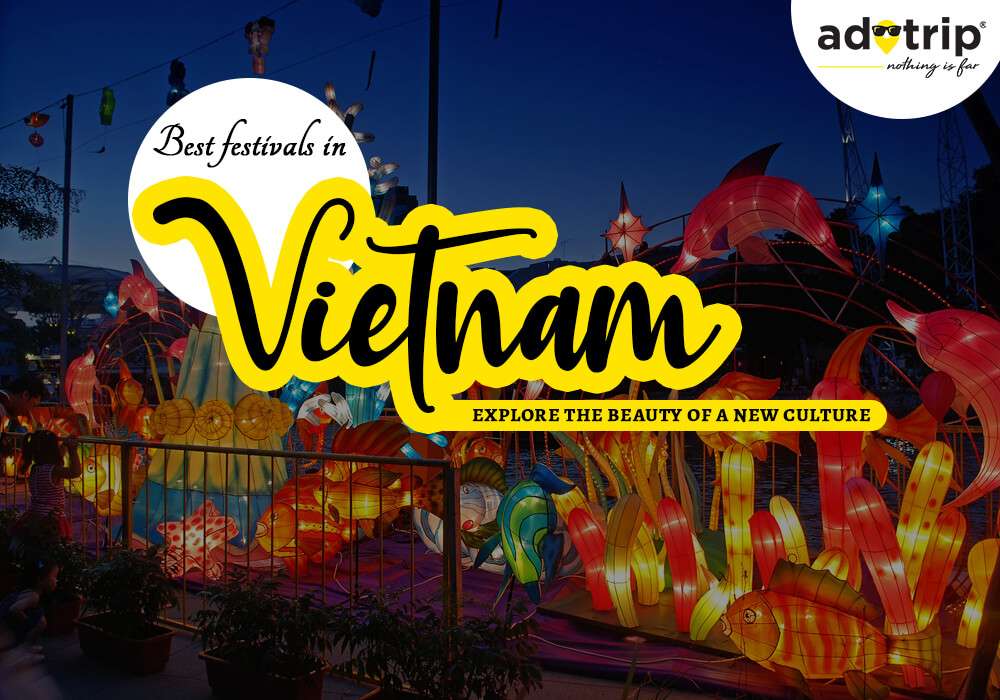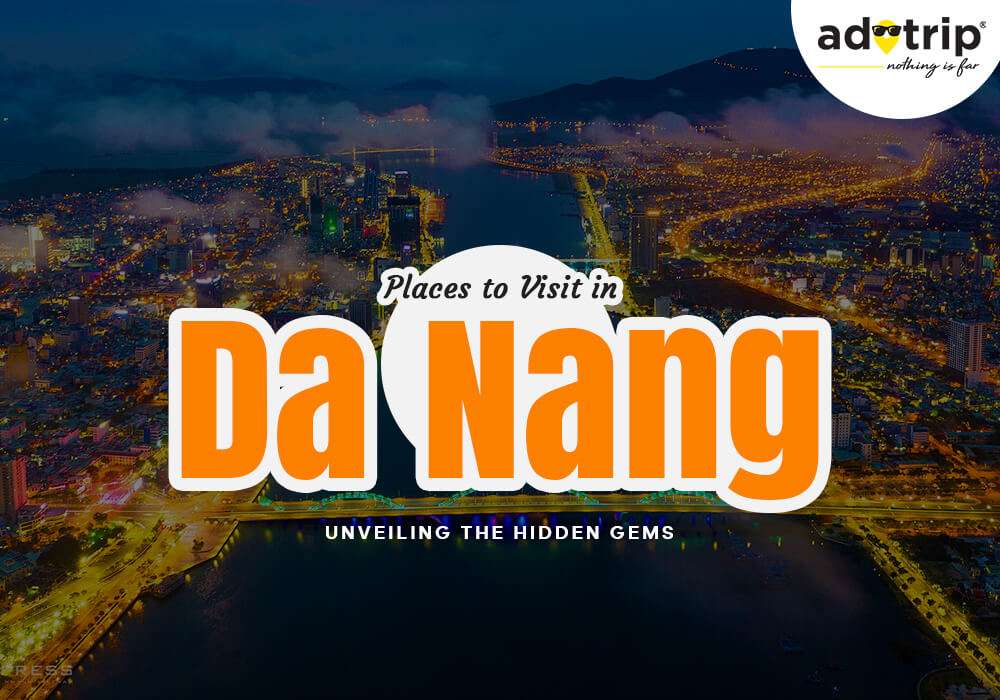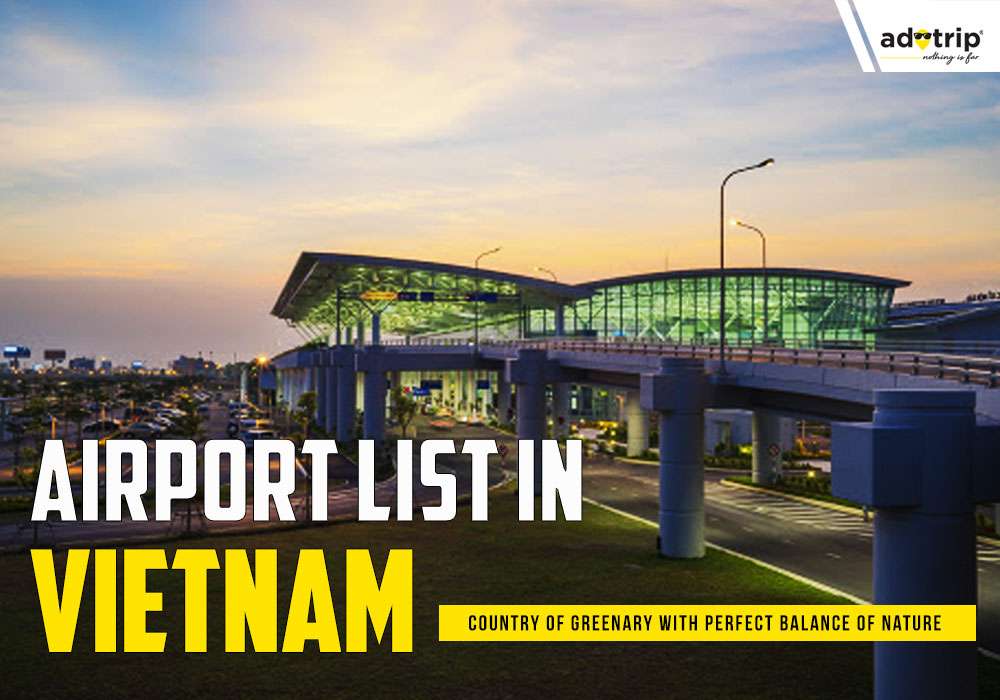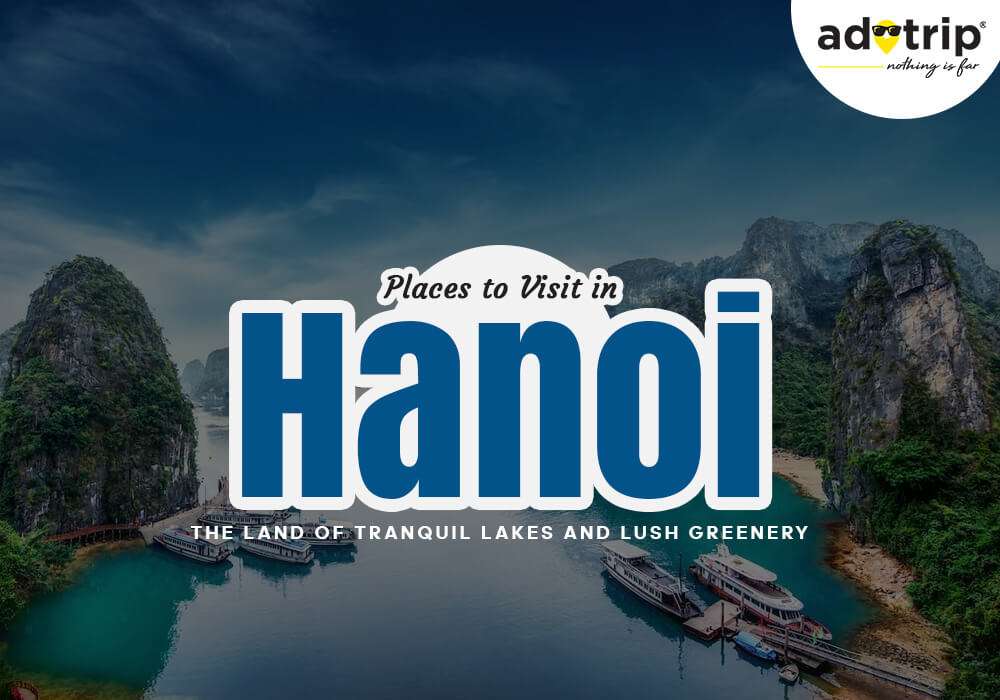
Last Updated At: 22-Dec-2023
Culture Of Vietnam | Unveiling Vietnam's Cultural Tapestry
The culture of Vietnam is a captivating mosaic that weaves together a rich tapestry of traditions, art forms, and culinary delights. Rooted in the country's history and diverse ethnic communities, Vietnamese culture is a harmonious blend of ancient practices and contemporary expressions. From the haunting melodies of Vietnamese traditional music to the tantalising flavours of its cuisine and the vibrant spectacles of cultural festivals, Vietnam's cultural landscape beckons explorers to immerse themselves in a world of beauty, authenticity, and profound experiences.
In the heart of Vietnamese culture, the cuisine is a testament to the country's artistry and culinary prowess. The aromatic symphony of herbs and spices found in dishes like pho, banh mi, and goi cuon tantalises the senses and transports one to the bustling streets of Vietnam. Vietnamese cuisine is not just sustenance; it's a celebration of flavours, a reflection of regional diversity, and a cornerstone of family and community gatherings. It is a culinary journey that traverses through centuries, showcasing the country's agricultural abundance and its people's ingenuity.
Read More: Places To Visit In Vietnam
Culture of Vietnam | From Rice Paddies to Floating Markets
Amidst the landscape of Vietnamese culture, vibrant cultural festivals punctuate the calendar, breathing life into ancient traditions and fostering a strong sense of unity. Events like Tet Nguyen Dan, the Lunar New Year celebration, and the Mid-Autumn Festival illuminate the streets with dazzling lanterns, vibrant dragon dances, and a spirit of togetherness. These festivals are not merely occasions for merrymaking; they connect Vietnamese individuals to their roots, forging connections between generations and instilling a deep appreciation for the nation's heritage.
- Melodic Harmony | Traditional Music of Vietnam
- Tastes of Vietnam | Exploring Vietnamese Gastronomy
- Celebratory Spirit | Culture Festivals in Vietnam
- Crafted Wonders | Traditional Artistry in Vietnam
- Elegant Gestures | Dance Forms of Vietnam
- Resonating Heritage | Cultural Legacy of Vietnam
- Cultural Threads | Traditional Attire in Vietnam
- Film and Literary Vietnam | Narratives and Arts
- Architectural Wonders | Vietnam's Unique Structures
- Pathways of Faith | Religious Beliefs and Practices in Vietnam
1. Melodic Harmony | Traditional Music of Vietnam
Vietnamese traditional music, characterised by its melodic harmony and emotional depth, is a cultural treasure that echoes through the ages. Rooted in the nation's folklore and history, this music reflects the Vietnamese soul. Instruments like the dan bau, a monochord zither, produce hauntingly beautiful melodies that evoke nostalgia and longing. These musical compositions often tell tales of love, nature, and the struggles of the Vietnamese people. The rhythm of traditional drums and the enchanting notes of wind instruments add layers of emotion to the melodies. Vietnamese traditional music is not just a form of entertainment; it's a vessel for preserving stories, values, and memories, acting as a bridge between generations and capturing the essence of the country's cultural identity.
2. Tastes of Vietnam | Exploring Vietnamese Gastronomy
Vietnamese cuisine is a feast for the senses, celebrated for its intricate flavours, vibrant colours, and aromatic herbs. The cuisine is a reflection of the country's agricultural abundance and the artistry of its people. Dishes like pho, a flavorful noodle soup, and banh mi, a delectable sandwich, have gained global recognition. Each word is a symphony of textures and tastes, often incorporating fresh herbs, fish sauce, and a balance of sweet, sour, salty, and spicy elements. Street food stalls and bustling markets offer diverse flavours, from the savoury cha gio (spring rolls) to the refreshing goi cuon (summer rolls). Vietnamese gastronomy is not only about nourishment; it's a cultural experience that brings people together, honours tradition, and showcases the culinary ingenuity of the Vietnamese people.
Read More: Famous Food of Vietnam
3. Celebratory Spirit | Culture Festivals in Vietnam
Vietnam's culture is punctuated by a celebratory spirit that comes alive during its vibrant festivals. Events like Tet Nguyen Dan, the Lunar New Year, and the Mid-Autumn Festival fill the streets with colourful lanterns, dragon dances, and jubilant gatherings. These festivals are more than just occasions for merrymaking; they are an integral part of Vietnamese identity, rooted in ancient customs and spiritual beliefs. The solemn Hung Kings' Temple Festival pays homage to the country's legendary founders, while the vibrant Hue Festival showcases the country's historical and cultural richness. Through these celebrations, the Vietnamese people honour their heritage, foster a sense of unity, and create lasting memories that bind families and communities together.
4. Crafted Wonders | Traditional Artistry in Vietnam
Vietnamese traditional crafts are a testament to the nation's artistic prowess and cultural heritage. The intricate art of crafting lacquerware, with its meticulous layering and exquisite motifs, showcases Vietnam's mastery of this ancient technique. Silk weaving, known for its elegance and intricate designs, tells stories of rural life and traditions. The iconic conical hat, or non la, provides respite from the sun and symbolises Vietnamese identity and agrarian traditions. These crafts are beautiful and imbued with meaning, connecting people to their history and local roots. Through their craftsmanship, artisans preserve traditions, transmit stories, and ensure that the cultural legacy of Vietnam remains alive for future generations.
5. Elegant Gestures | Dance Forms of Vietnam
Vietnamese dance forms are elegant expressions of cultural identity and storytelling. The Ao Dai dance, often performed by women in the traditional long dress, exudes grace and gentleness, reflecting the beauty of Vietnamese femininity. With its vibrant and dynamic movements, the lion dance symbolises power, courage, and prosperity. Water puppetry, a unique theatrical art form, brings stories to life through puppets dancing on the water's surface. These dance forms are captivating performances and windows into Vietnamese history, mythology, and societal values. Through dance, the Vietnamese people convey their emotions, traditions, and collective identity with every movement.
6. Resonating Heritage | Cultural Legacy of Vietnam
Vietnam's cultural legacy is a tapestry woven from centuries of history, traditions, and influences. Ancient architectural marvels like the Temple of Literature in Hanoi and the My Son Sanctuary reveal the nation's spiritual and artistic sophistication. The complex Nha Nhac, or royal court music, is recognised by UNESCO as embodying Vietnamese cultural heritage. The epic poetry of "Truyen Kieu" and the profound philosophies of Confucianism have left an indelible mark on Vietnamese intellectual and artistic endeavours. This cultural legacy is a reservoir of wisdom, aesthetics, and historical insights shaping the Vietnamese people's worldview and connection to the past.
7. Cultural Threads | Traditional Attire in Vietnam
Traditional clothing in Vietnam, while evolving with modern times, is still deeply rooted in cultural symbolism and historical significance. The Ao Dai, an elegant long dress, is a visual embodiment of Vietnamese grace and modesty. The Nón Lá, or conical hat, not only shields from the sun but also represents the simplicity and resilience of rural life. Regional variations in clothing styles, colours, and patterns showcase the diversity within Vietnamese culture. These traditional attires are more than just clothing; they connect individuals to their heritage, conveying a sense of pride, identity, and continuity through the generations.
8. Film and Literary Vietnam | Narratives and Arts
Vietnam's narrative traditions are beautifully preserved in its film and literature. These works delve into the nation's history, struggles, and aspirations, from ancient folktales to contemporary novels. Classic movies like "The Scent of Green Papaya" and "Cyclo" provide insights into daily life and societal changes. Literary giants like Nguyen Du and Nguyen Hien Le have crafted stories that capture the essence of Vietnamese identity and the complexities of human experience. Film and literature serve as mirrors reflecting Vietnam's evolution, allowing people to explore the past, understand the present, and envision the future through the eyes of its storytellers.
9. Architectural Wonders | Vietnam's Unique Structures
Vietnamese architecture reflects a fusion of cultural influences with a harmonious blend of indigenous styles, colonial traces, and modern innovations. The Imperial Citadel of Thang Long in Hanoi and the ancient town of Hoi An showcase the country's historical grandeur. French colonial buildings, like the Notre Dame Cathedral Basilica of Saigon, stand as reminders of Vietnam's colonial past. Contemporary architectural feats like the Cau Vang (Golden Bridge) reveal the country's creative spirit. The architectural wonders of Vietnam mirror its resilience, adaptability, and dedication to preserving the past while embracing the future.
10. Pathways of Faith | Religious Beliefs and Practices in Vietnam
Vietnam's religious landscape is a complex mosaic of traditions, reflecting the interplay of indigenous beliefs, Buddhism, Confucianism, Taoism, and Catholicism. Places of worship like the One Pillar Pagoda in Hanoi and the Thien Mu Pagoda in Hue are spiritual landmarks that witness the country's diverse faiths. Festivals like Tet Trung Thu (Mid-Autumn Festival) blend cultural and religious elements, fostering community unity and respect. Religious beliefs are deeply ingrained in Vietnamese life, shaping values, ethical principles, and the nation's cultural fabric.
Read More: Famous Festival of Vietnam
The culture of Vietnam is not merely a collection of practices; it is a living, breathing entity that
unites generations, shapes interactions, and reverberates through every corner of the nation. It reflects the resilience of people who have endured challenges, the creativity of artists who have captured the essence of their homeland, and the unity of communities bound by traditions and values. This culture honours the past while embracing the future, blending old-world charm with modern aspirations. As one delves into the various facets of Vietnamese culture, from the harmonious melodies of traditional music to the architectural marvels that stand as a testament to its history, it becomes evident that each element holds a story, a connection, and a sense of belonging. The culture of Vietnam is a source of pride and a means of passing down wisdom, celebrating diversity, and fostering a deep-rooted appreciation for the vibrant and multifaceted tapestry that defines this remarkable nation. So voyagers, plan your vacation to Vietnam with Adotrip, enjoy a hassle-free journey, and make lifelong memories.
With us, nothing is far!
Book Vietnam Tour Packages
Frequently Asked Questions about the Culture of Vietnam
Q1. How strong is Confucian influence on Vietnamese society?
A1. Confucian influence on Vietnamese society is significant:
- Shaped social structure and ethics
- Impact on education and governance
- Guided family relationships and values
Q2. What religions like Buddhism, Taoism and Catholicism exist?
A2. Religions like Buddhism, Taoism, and Catholicism exist in Vietnam:
- Buddhism: Predominant spiritual practice
- Taoism: Blends with local beliefs
- Catholicism: Introduced by colonial powers
Q3. How important is phở and other cuisine in Vietnamese culture?
A3. Phở and other cuisine are highly important in Vietnamese culture:
- Symbolise culinary heritage and regional diversity
- Reflect cultural identity and social gatherings
- Passed down through generations, preserving tradition
Q4. How vital are family and ancestral bonds?
A4. Family and ancestral bonds are vital in Vietnamese culture:
- The foundation of social structure and values
- Emphasis on filial piety and respect
- Fosters unity, support, and intergenerational connections
Q5. What traditional festivals feature dragon dancing?
A5. Traditional festivals featuring dragon dancing include:
- Lunar New Year (Tet Nguyen Dan)
- Mid-Autumn Festival (Tet Trung Thu)
- Cultural celebrations and local events
Q6. What folk arts like water puppetry remain important?
A6. Folk arts like water puppetry remain important in Vietnamese culture:
- Preserves storytelling traditions
- Reflects rural life and mythology
- Entertains and educates audiences
Q7. What traditional garments like áo dài are iconic?
A7. Traditional garments like áo dài are iconic in Vietnamese culture:
- Symbolise elegance and femininity
- Reflect national identity and pride
- Worn for special occasions and ceremonies
Q8. How popular are sports like martial arts and badminton?
A8. Sports like martial arts and badminton are popular in Vietnam:
- Martial arts (Vovinam) showcase discipline and heritage
- Badminton is a widely enjoyed recreational sport
- Foster physical fitness and community engagement
Q9. Which influential historical dynasties ruled Vietnam?
A9. Influential historical dynasties that ruled Vietnam include:
- Tran Dynasty
- Ly Dynasty
- Nguyen Dynasty
- Le Dynasty
- Ho Dynasty
Q10. How cosmopolitan are modern cities like Hanoi and Ho Chi Minh City?
A10. Modern cities like Hanoi and Ho Chi Minh City are cosmopolitan:
- Blend traditional culture with global influences
- Vibrant art, entertainment, and dining scenes
- Attract international visitors and expatriates
--- Published By Adotrip
Latest Blogs

Long Weekends In India 2025 - List of Holidays

Kazakhstan Travel Guide 2025: Affordable Luxury, Visa Free E...

Think Ayodhya is Just Temples? Discover Its Hidden Artistic...

Why Azerbaijan is the Best Budget Friendly Alternative to Sw...













 Dubai
Dubai Malaysia
Malaysia USA
USA





